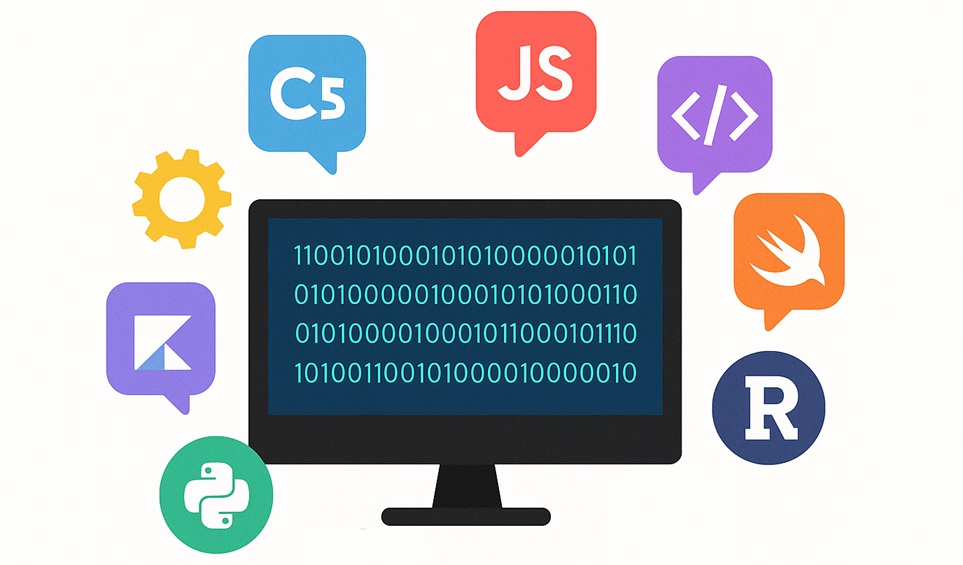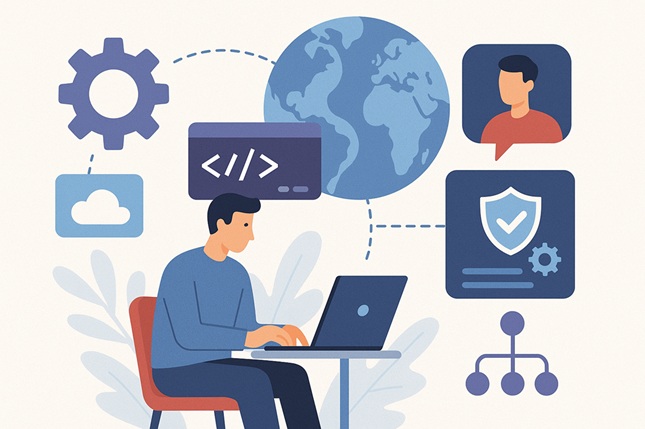Introduction
At some point, every growing business faces the same pain: spreadsheets, sticky notes, and scattered tools stop working. Sales teams can’t keep up with leads, managers can’t see what’s going on in real time, and customers feel the cracks in communication. That’s when companies start looking at CRM software - and not as a “nice-to-have,” but as a critical business system.
A Customer Relationship Management (CRM) system is more than a digital address book. It’s the operating system for your customer-facing business: the place where marketing, sales, and service teams finally get on the same page. With today’s complexity - SaaS tools, cloud integrations, and multi-channel sales - the risks of not having a CRM are too high. Missed leads, broken processes, and incomplete data cost real money.
This article explains what CRM really means in practice, why businesses decide to implement it, and what signs prove it’s time to move on from spreadsheets and adopt a proper system.
1. What Is CRM Software in Practice?
Many business leaders hear the term CRM software but aren’t sure what it actually does. Simply put, CRM (Customer Relationship Management) is a platform that organizes and manages all interactions with your leads and customers in one place.
Instead of salespeople keeping personal notes in Excel or customer support juggling emails across multiple inboxes, CRM brings everything together. Contact details, order history, email communication, phone call records, deal stages, follow-ups - it’s all centralized. That means your team doesn’t have to waste time chasing information across different tools.
There are several types of CRM systems:
- Operational CRM: focuses on automating sales, marketing, and service processes (think Salesforce or HubSpot).
- Analytical CRM: prioritizes data and reporting, helping managers make decisions based on customer insights.
- Collaborative CRM: improves communication across departments and with external partners.
In practice, most platforms combine these functions. For example:
- A retail company might use CRM to connect e-commerce orders, email campaigns, and in-store loyalty cards.
- A B2B SaaS company might track demo requests, sales pipelines, and customer renewals.
- A logistics provider could integrate CRM with fleet management and billing systems.
Whether cloud-based (SaaS) or installed on-premises, CRM systems are about creating a single source of truth for customer relationships.
2. The Core Benefits of CRM Software
CRM isn’t just a digital filing cabinet. It reshapes how businesses sell, market, and serve their customers. Let’s break down the four benefits that consistently stand out across industries.
Sales Growth and Revenue Acceleration
A well-implemented CRM transforms a sales team’s effectiveness. Instead of chasing leads blindly, reps see a full timeline of each customer’s behavior: which emails they opened, which webinars they attended, and which pages they visited. This allows for highly targeted outreach.
Forrester’s research shows conversion rates can improve by up to 300% when CRM systems are properly integrated. Why? Because sales teams spend less time guessing and more time closing. Follow-ups are automated, opportunities are prioritized by likelihood to convert, and managers get real-time pipeline visibility.
Think of it as the difference between fishing with a net and fishing with a spear. CRM gives sales reps the precision tool they need to land bigger, faster deals.
Personalized Customer Experiences
Customers don’t want to feel like numbers in a database. They expect personalization - and CRM makes it possible at scale.
Imagine a retail customer who bought a winter coat last year. A CRM system doesn’t just record the transaction - it stores their preferences, sizes, and browsing patterns. The next time they visit, your sales or marketing team can recommend matching accessories, or trigger a discount offer right before winter.
This personalization extends to B2B as well. For example, a logistics client can be reminded when their contract renewal is approaching, complete with tailored upsell options. Instead of generic marketing, every interaction feels relevant, timely, and valuable.
Cost Reduction and Efficiency Gains
Running without CRM means your employees are duplicating effort, re-entering data, and juggling disconnected tools. That overhead is expensive.
CRM centralizes all operations:
- Leads flow seamlessly from marketing to sales.
- Customer service has full access to order history without chasing spreadsheets.
- Automated workflows replace hours of manual reporting.
Forrester reports that companies adopting CRM cut labor costs by about 20%. But the hidden savings are often greater: fewer lost leads, reduced error rates, and faster time-to-market for campaigns. In many cases, CRM systems pay for themselves within the first year through recovered efficiency alone.
Data-Driven Analytics and Insights
Gut instinct has its place, but scaling a business requires hard data. CRM analytics provide that foundation.
Dashboards give a 360° view of operations: who your best customers are, which campaigns work, where the funnel leaks occur, and how sales cycles differ across regions. With integrations to ERP, eCommerce, and marketing platforms, CRM becomes the command center for decision-making.
Companies that adopt real-time CRM analytics report stronger customer loyalty and better ROI on marketing spend. By tracking the full customer journey, businesses stop making assumptions and start acting on evidence.
3. Industry-Specific Applications of CRM
While the mechanics of CRM are universal, the impact varies dramatically by industry. Let’s look at a few cases.
Retail and E-Commerce
For retailers, CRM is a survival tool. Customers shop across multiple channels - stores, websites, marketplaces, mobile apps. Without CRM, data remains fragmented. With it, retailers unify everything: purchase history, loyalty points, returns, and marketing touchpoints. The result is a smoother shopping journey and higher lifetime value per customer.
Healthcare
Healthcare organizations need CRM to balance patient care with strict compliance (HIPAA, GDPR). Hospitals use CRM to track patient communications, appointment histories, and even billing processes. Telehealth providers leverage CRM for video consultations and post-care follow-up. The focus here is both personalization and security.
Financial Services
Banks and fintechs use CRM to manage sensitive client portfolios, ensure compliance with regulations like SOX and PCI DSS, and deliver personalized financial products. Wealth managers, for example, can view the entire client profile - investments, communications, and risk levels - through one secure platform.
Logistics and Transportation
For logistics firms, CRM integrates with TMS (transportation management systems) and ERP platforms to give visibility into freight, customer contracts, and delivery performance. It reduces the manual communication burden - dispatchers no longer need to call drivers one by one; CRM integrates with APIs for real-time tracking and client updates.
Real Estate
Real estate agents use CRM to track properties, manage leads, and schedule showings. With features like automated reminders, brokers can follow up at the right time, while clients receive curated property recommendations. For agencies, CRM becomes the engine for scaling operations without losing the “personal touch.”
4. When to Invest in CRM (and When Not To)
CRM is powerful, but it’s not always the right fit. For very small companies with fewer than 100 clients or minimal transactions, spreadsheets may suffice. If sales cycles are short and interactions are limited, the overhead of CRM might outweigh the benefits.
However, the tipping point comes quickly. Signs that it’s time to adopt CRM include:
- Sales reps losing track of follow-ups.
- Marketing unable to measure campaign effectiveness.
- Customers receiving inconsistent service.
- Leadership lacking visibility into revenue forecasts.
In these scenarios, CRM stops being optional - it becomes essential infrastructure.
5. CRM ROI: The Hard Numbers
Skeptical executives often ask: “But what’s the return?” Fortunately, the numbers are compelling.
- Nucleus Research reports that every $1 invested in CRM delivers an average return of $8.71.
- Salesforce found productivity increases of up to 34% after CRM adoption.
- Companies using CRM report sales forecast accuracy rising by 42%.
When layered with industry-specific customization, these gains compound. A logistics company might save millions by automating dispatch communications. A healthcare provider may avoid costly compliance fines through secure record-keeping.
6. The Future of CRM: AI and Beyond
The next frontier in CRM isn’t just digitization - it’s intelligence. Leading systems are integrating AI for predictive analytics, sentiment analysis, and even automated recommendations. Chatbots integrated with CRM can handle customer inquiries in real time. Predictive models can flag at-risk customers before they churn.
For startups, this means getting enterprise-grade power without enterprise budgets. For large organizations, it’s the key to scaling personalization without ballooning headcount.
Conclusion
CRM software is not hype - it’s a practical, measurable solution that solves some of the most pressing challenges businesses face today: growing sales, cutting costs, improving customer experience, and staying compliant.
Whether you’re a startup ready to scale or an enterprise needing visibility across global operations, CRM is the tool that connects your teams, your customers, and your strategy.
And if your business requires more than a one-size-fits-all tool? Building or customizing your CRM may be the smartest investment you’ll ever make.

 LinkedIn
LinkedIn
 Twitter
Twitter
 Facebook
Facebook
 Youtube
Youtube







